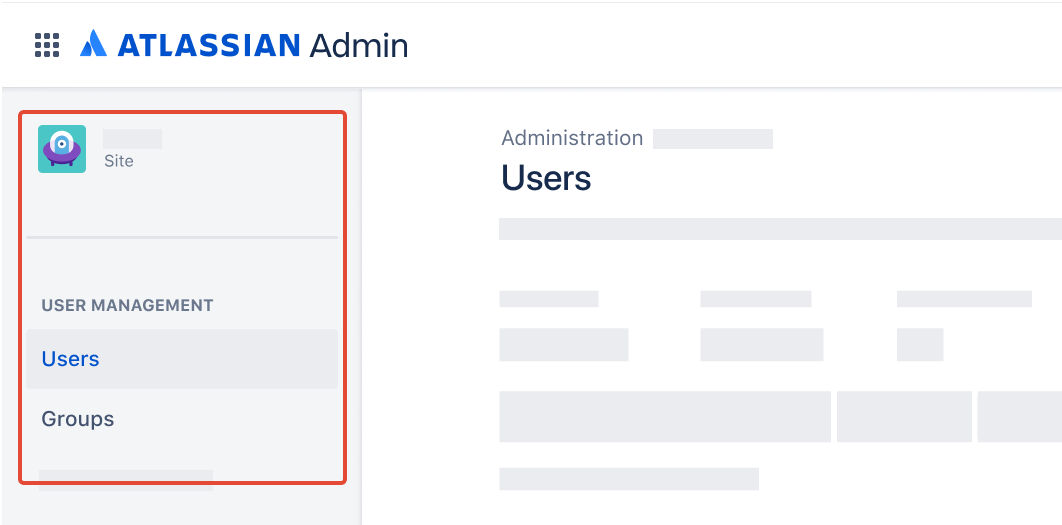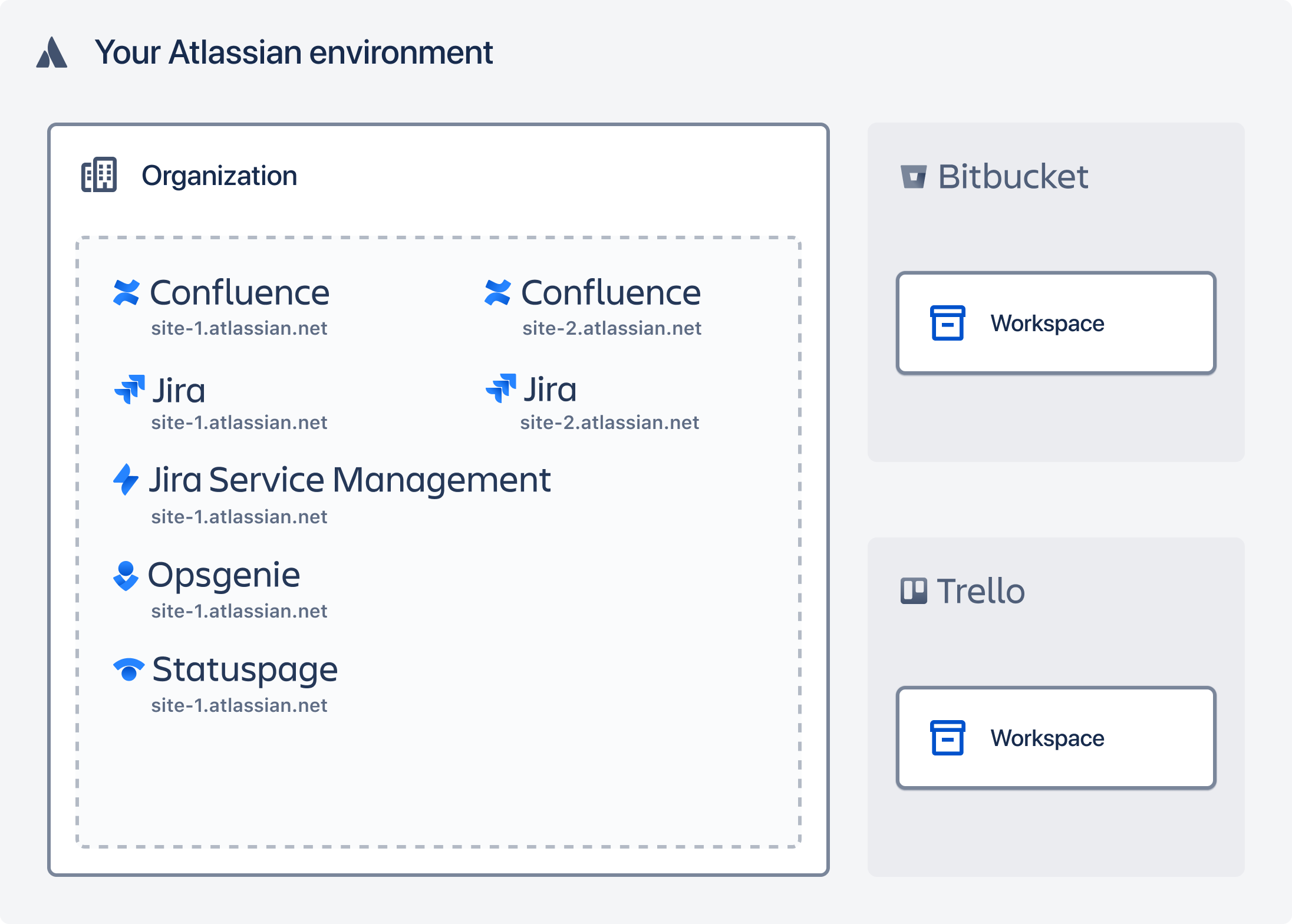Learn about Atlassian organizations
New to administering Atlassian cloud products? Learn about Atlassian organizations and what it means to be an organization admin.
Which user management experience do you have?
To check, go to your organization at admin.atlassian.com and select Directory. If the Users and Groups lists are found here, then you are using the centralized user management. Learn more about the centralized user management
Original | Centralized |
As a site administrator or organization admin, Users is found under Product site.  | As an organization admin, Users is found under Directory tab.  |
Jump to the
Atlassian organizations bring together your company’s users and products. As an organization admin, you manage the Atlassian accounts of your employees and the products that belong to your organization.
When you create a new instance of an Atlassian cloud product, you can manage it from your organization. The products that can be part of your organization include Jira products (Jira and Jira Service Management), Confluence, Statuspage, Trello, Opsgenie, and Bitbucket.

When you manage products from this central location, you have access to all administration settings and billing details. With an Atlassian Guard Standard subscription, you can gain additional insight into activities across your organization with an audit log and charts about product usage and security adoption. Understand Atlassian Guard
Users aren’t tied to any one product, which means that they can get access to products within or outside your organization.
Users aren’t tied to one organization either until you can claim ownership of their accounts. When you do, they become your organization’s managed accounts, but can still access products outside your organization.
You have full control over managed accounts. You can update their email address and other details, deactivate or delete accounts, and enforce authentication policies for secure login. With an Atlassian Guard Standard subscription, we offer more advanced features, like syncing users from a directory outside your organization. When you sync users to your managed accounts, your settings impact how those accounts log into your products, as shown in the illustration.

To start managing your employee's accounts, verify ownership of your company's domain. This allows you to claim accounts with that email domain. Learn more about verifying a domain for your organization.
The table includes a list of what's available for managed accounts within your organization.
User management activities | Requires a verified domain? | Also requires Atlassian Guard Standard? |
|---|---|---|
Grant product access | - | - |
Verify domains | - | - |
Update email address and name of managed accounts | ✅ | - |
Delete or deactivate managed accounts | ✅ | - |
Update password policy | ✅ | - |
Update idle session duration | ✅ | - |
Enforce two-step verification | ✅ | ✅ |
Require single sign-on | ✅ | ✅ |
Sync users from G Suite | ✅ | - |
Sync users from identity provider | ✅ | ✅ |
Atlassian organizations bring together your company’s users and products. As an organization admin, you manage the Atlassian accounts of your employees and the products that belong to your organization.
When you create a new instance of an Atlassian cloud product, you can manage it from your organization. Each instance of the product is associated with a site, which has its own site URL and administration. The products that can be part of your organization include Jira products (Jira and Jira Service Management), Confluence, Statuspage, Trello, and Opsgenie. Currently, Bitbucket can’t be associated with an organization.

When you manage products from this central location, you have access to all administration settings and billing details. With an Atlassian Guard Standard subscription, you can gain additional insight into activities across your organization with an audit log and charts about product usage and security adoption. Understand Atlassian Guard
Users aren’t tied to any one product, which means that they can get access to products within or outside your organization.
Users aren’t tied to one organization either until you can claim ownership of their accounts. When you do, they become your organization’s managed accounts.
You have full control over managed accounts. You can update their email address and other details, deactivate or delete accounts, and enforce authentication policies for secure login. With an Atlassian Guard Standard subscription, we offer more advanced features, like syncing users from a directory outside your organization. When you sync users to your managed accounts, your settings impact how those accounts log into your sites and products, as shown in the illustration.

To start managing your employee's accounts, verify ownership of your company's domain. This allows you to claim accounts with that email domain. Learn more about verifying a domain for your organization.
The table includes a list of what's available for managed accounts within your organization.
User management activities | Requires a verified domain? | Also requires Atlassian Guard Standard? |
|---|---|---|
Grant product access | - | - |
Verify domains | - | - |
Update email address and name of managed accounts | ✅ | - |
Delete or deactivate managed accounts | ✅ | - |
Update password policy | ✅ | - |
Update idle session duration | ✅ | - |
Enforce two-step verification | ✅ | ✅ |
Require single sign-on | ✅ | ✅ |
Sync users from G Suite | ✅ | - |
Sync users from identity provider | ✅ | ✅ |
Was this helpful?